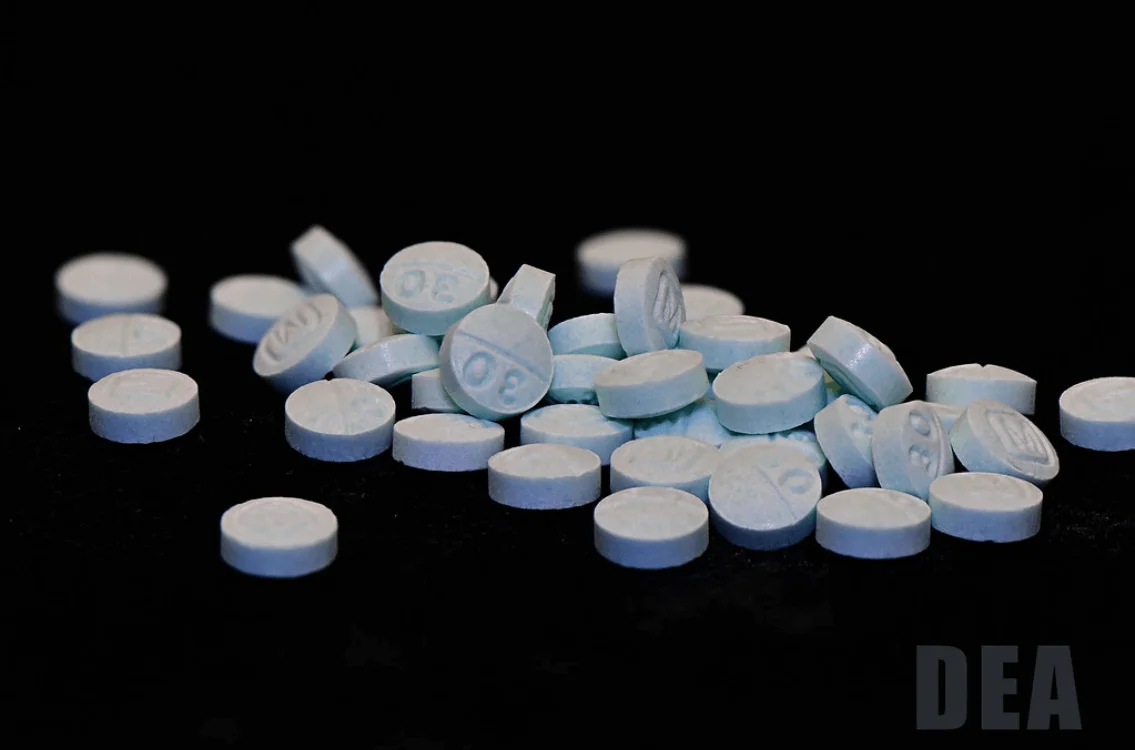
Fentanyl Relapse: Rates, Signs, and Prevention Strategies
Fentanyl addiction represents one of the most challenging and dangerous facets of the opioid crisis gripping the United States.
This synthetic opioid, known for its extreme potency, has become a significant contributor to the alarming rates of overdose deaths nationwide. Understanding fentanyl addiction, particularly its high potential for relapse, is crucial in addressing this public health emergency.
The impact of fentanyl addiction extends far beyond the individual user. It strains healthcare systems, impacts families and communities, and contributes significantly to the economic burden of substance abuse.
The Centers for Disease Control and Prevention (CDC) reports that synthetic opioids are the primary driver of overdose deaths in the U.S., highlighting the gravity of this issue.
Relapse, a common occurrence in the journey to recovery, is especially concerning in the context of fentanyl use due to the drug’s potency and the risk of fatal overdose. Studies conducted by the National Institute on Drug Abuse indicate that the relapse rate for opioid addiction can be as high as 40-60%, underscoring the need for effective relapse prevention strategies.
This statistic mirrors the chronic nature of addiction, emphasizing that relapse should be viewed as a potential part of the recovery process, not a failure.
Understanding relapse in the context of this drug use is not just about recognizing the signs and triggers. It’s about comprehensively addressing the underlying issues that lead to addiction, such as mental health disorders, social and environmental factors, and the physical repercussions of long-term opioid use.
It’s also about fostering hope and positivity, offering empathy and understanding to those struggling, and providing actionable steps towards recovery.
At Resilient Recovery, we recognize the unique challenges posed by addiction. Our approach is rooted in empathy, focusing on the individual’s journey and offering tailored treatment plans that address both the physical and psychological aspects of addiction.
We believe in empowering our clients with knowledge and support, helping them navigate the complex path of recovery with confidence and resilience.
In the following sections, we will delve deeper into the rates, signs, and prevention strategies for fentanyl relapse, offering insights and guidance for those affected by this formidable challenge.
Understanding Fentanyl Relapse
Relapse is a critical concern in the journey of recovery from addiction. It’s essential to understand not only what relapse entails but also how it differs from a lapse and the prevalence of relapse in those recovering from fentanyl addiction.
Definition and Distinction Between a Lapse and a Relapse
- Lapse: A lapse, often referred to as a “slip,” is a brief and limited return to drug use. For instance, someone in recovery might use fentanyl once or twice but then immediately return to their treatment and recovery efforts. A lapse is like a momentary stumble on the path to recovery, not a complete return to addictive behaviors.
- Relapse: In contrast, a relapse is a more sustained return to drug use. It’s not just a one-time event but a series of actions that indicate a significant setback in recovery. Relapse often involves returning to the pattern of regular or uncontrolled drug use, similar to the behavior before treatment. It’s like falling back into old habits after a period of improvement.
Prevalence of Relapse in Fentanyl Addiction Recovery
- Risk of Relapse: The risk of relapse is a persistent reality in the recovery process, particularly with potent opioids like fentanyl. Due to its high potency and the intense craving it can induce, fentanyl poses a significant challenge in maintaining long-term sobriety.
- Relapse at Some Point: It’s essential to recognize that relapse is a common part of many individuals’ recovery journeys. While specific statistics on fentanyl relapse rates are not readily available, the general understanding of addiction treatment is that a significant portion of individuals may experience relapse at some point. This is particularly true for opioids due to their highly addictive nature and the physical and psychological dependencies they create.
Understanding the nuances between a lapse and a relapse is crucial in providing appropriate support and interventions. Recognizing that a lapse does not have to lead to a full relapse can empower individuals in recovery, as it frames such incidents as manageable setbacks rather than total failures.
At Resilient Recovery, we emphasize the importance of understanding these distinctions and preparing for the risks. Our approach is designed to support individuals through every step of their recovery journey, offering the tools and resources needed to navigate the challenges of addiction recovery.
Stages of Fentanyl Relapse
Understanding the stages of relapse is crucial for individuals grappling with this use disorder. A setback is not a singular event but a process that unfolds in stages, each with distinct characteristics. Recognizing these stages can empower individuals and their support networks to intervene effectively, potentially preventing a complete regression to using.
Emotional Relapse: Identifying Early Emotional Signs
- Early Warning Signs: During the emotional stage, individuals may not be thinking about using again, but their emotions and behaviors may be setting the groundwork for potential setbacks. Signs include anxiety, mood swings, irritability, and social withdrawal.
- Impact on Mental Health: These emotional signs are often intertwined with underlying mental health conditions, which can exacerbate the risk. Addressing these emotional symptoms early is critical to maintaining a period of sobriety.

Mental Relapse: Internal Conflict and Craving Management
- Battling Cravings: In the mental stage, the individual starts to think about using again. There’s an internal conflict between the desire to use and the desire to remain sober. Cravings can become more frequent and intense during this stage.
- Coping Strategies: Developing strong coping strategies is vital in this stage. This includes seeking support from therapists or support groups, engaging in healthy activities, and practicing mindfulness or other techniques to manage cravings.
Physical Relapse: The Act of Using Fentanyl Again
- Crossing the Threshold: The physical stage is where the individual actively uses drugs again. This stage is often the culmination of the emotional and mental relapse stages.
- Intervention and Support: Quick intervention following a physical relapse is crucial. It’s important to understand that addiction often involves cycles of relapse and recovery, and a physical relapse doesn’t mean the end of the recovery journey.
Risk Factors for Fentanyl Relapse
Identifying and understanding the risk factors for relapse is a crucial aspect of its prevention. Individuals recovering from opioid use disorder may find themselves more likely to relapse due to various triggers and environmental factors.
Common Triggers and Environmental Cues
- Environmental Factors: Certain places, people, or situations associated with past substance use can act as powerful triggers. These ecological cues can evoke memories and feelings that increase the urge to use them again.
- Avoidance Strategies: Developing strategies to avoid or cope with these common triggers is essential. This might include changing routines, avoiding specific locations, or seeking support when encountering unavoidable triggers.
The Role of Stress and Negative Emotions
- Emotional Triggers: Stress, anxiety, and other negative emotions are significant risk factors. Emotional distress can weaken resolve and lead to seeking comfort in familiar, albeit harmful, habits.
- Emotional Regulation: Learning to manage stress and negative emotions through healthy outlets like exercise, meditation, or therapy can significantly reduce the risk.
Impact of Interpersonal Conflicts and Peer Pressure
- Social Dynamics: Interpersonal conflicts and peer pressure, especially from those still engaged in substance use, can significantly increase the likelihood of reoccurrence.
- Building Supportive Relationships: Cultivating a supportive social network and learning to navigate conflicts healthily can help maintain sobriety.
Influence of Physical Pain and Prescription Practices
- Pain Management: For many, the path to opioid use disorder began with managing physical pain. Inadequately controlled pain or unsafe prescription practices can lead to a setback.
- Safe Pain Management: Working with healthcare providers to find safe, effective pain management strategies is crucial, especially for those with a history of opioid use disorder.
The Paradox of Positive Moods and Celebratory Events
- Positive Triggers: Surprisingly, positive moods and celebratory events can also trigger relapsing. The lowered guard in happy moments can lead to a lapse in judgment.
- Awareness and Planning: Knowing this paradox and having a plan for navigating positive events can help maintain sobriety.
Prevention Strategies
Preventing relapse in opioid addiction requires a multifaceted approach. Recognizing high-risk situations, developing effective coping mechanisms, building a solid support system, and fostering self-efficacy are critical components of a successful relapse prevention plan.

Importance of Recognizing High-Risk Situations
- Awareness: The first step in prevention is recognizing situations that may increase the risk of a setback. This includes understanding personal triggers, whether emotional states, people, places, or specific events.
- Proactive Planning: Once these high-risk situations are identified, individuals can develop proactive strategies to avoid or manage them effectively.
Developing Effective Coping Mechanisms
- Skill Building: Learning and practicing coping skills is essential for managing cravings and negative emotions. This can include stress management techniques, mindfulness, and healthy lifestyle choices.
- Behavioral Therapies: Engaging in behavioral therapies can provide individuals with the tools to cope with cravings and triggers. Treatments like Cognitive Behavioral Therapy (CBT) are particularly effective in changing harmful thought patterns and behaviors.
Building a Strong Support System
- Community Support: A robust support system, including family, friends, and peer support groups, can provide emotional and practical support. This network can offer encouragement, understanding, and accountability.
- Professional Support: Regular check-ins with healthcare providers, therapists, or counselors are crucial. For some, outpatient programs or family therapy can be beneficial in maintaining sobriety and addressing underlying issues.
Role of Self-Efficacy and Confidence in Recovery
- Building Confidence: Developing a sense of self-efficacy – the belief in one’s ability to manage challenges – is vital in sustaining recovery. Confidence can be built through small successes and positive reinforcement.
- Empowerment: Empowering individuals to take charge of their recovery journey fosters a sense of ownership and responsibility, which is crucial for long-term success.
At Resilient Recovery, we emphasize the importance of a comprehensive relapse prevention plan that includes these elements.
Our approach empowers individuals with the knowledge, skills, and support they need to prevent a recurrence and maintain their recovery journey. We believe that with the right tools and support, individuals can overcome the challenges of addiction and lead fulfilling, sober lives.
Immediate Steps After a Fentanyl Relapse
Experiencing a setback in the journey of recovery from addiction can be disheartening, but it’s important to remember that it’s a standard part of the process. Immediate action and a return to supportive structures are crucial to get back on the road to recovery. Here are some vital steps to take following a relapse:
Seeking Help and Support
- Reaching Out: The first step after a relapse is to seek help. This could mean contacting a treatment facility, a therapist, or a trusted healthcare provider.
- Treatment Program Reassessment: It may be necessary to reassess and adjust the existing treatment program. A relapse can indicate that certain aspects of the program need to be re-evaluated or intensified.

Attending Self-Help Groups and Therapy
- Therapy or Counseling: Re-engaging with therapy or counseling sessions can provide the necessary guidance and support to understand and overcome the causes of setbacks.
- Support Groups: Attending self-help groups like Narcotics Anonymous (NA) can offer a sense of community and shared experience, which is invaluable in the recovery process.
Avoiding Triggers and Setting Healthy Boundaries
- Trigger Management: Identifying and avoiding triggers is crucial post-relapse. This might involve changing one’s lifestyle or environment to reduce the risk of future recurrences.
- Setting Boundaries: Establishing healthy boundaries with people or situations that may increase the risk of substance use is important. This includes distancing oneself from individuals still engaged in substance use.
Engaging in Self-Care and Reflection
- Reflective Practices: Taking time for self-reflection to understand the factors that led to using again can be enlightening and help make necessary changes.
- Self-Care: Engaging in self-care activities that promote physical, mental, and emotional well-being is essential. This includes regular exercise, a balanced diet, adequate sleep, and stress-reducing activities.
At Resilient Recovery, we understand that the road to recovery is not always linear. We are committed to supporting our clients through every step of their journey, including the period following a setback.
Our treatment programs are designed to provide the tools and resources needed to navigate the challenges of recovery and to help individuals build a resilient foundation for a sober life.
Treatment Options Post-Relapse
After experiencing a relapse in addiction, it’s crucial to reassess and potentially adjust treatment strategies. Understanding the available treatment options and deciding on the most appropriate course of action is key to getting back on track in the recovery journey.
Deciding Between Inpatient and Outpatient Programs
- Inpatient Programs: These programs offer a structured and intensive treatment environment, typically including medical supervision, therapy, and support services. They are particularly beneficial for those who need a stable and controlled environment to focus solely on recovery.
- Outpatient Programs: Outpatient treatment allows individuals to live at home while attending therapy and treatment sessions. This option is often suitable for those with a strong support system at home and a less severe addiction history.
Behavioral Therapies and Their Role in Relapse Prevention
- Types of Behavioral Therapies: Common therapies include Cognitive Behavioral Therapy (CBT), Dialectical Behavior Therapy (DBT), and Motivational Interviewing. These therapies help individuals understand their addiction, develop coping strategies, and change harmful thought patterns.
- Effectiveness: Behavioral therapies are crucial in prevention as they equip individuals with the skills to manage triggers, stress, and cravings, thereby reducing the likelihood of future setbacks.

Importance of Continuous Personal Therapy
- Ongoing Support: Continuous therapy provides consistent support and guidance, helping individuals navigate the challenges of recovery and maintain their progress.
- Personalized Care: Personal therapy can be tailored to the individual’s needs, addressing underlying issues such as mental health conditions, personal traumas, or co-occurring disorders.
Utilizing Relapse Prevention Classes or Groups
- Group Support: Relapse prevention classes or support groups offer a community of individuals who share similar experiences and challenges. This collective environment fosters a sense of belonging and mutual support.
- Skill Building: These groups often focus on building skills and strategies to prevent a setback, such as identifying how it’s provoked, developing healthy coping mechanisms, and creating a personal relapse prevention plan.
At Resilient Recovery, we understand the complexities of addiction and the challenges that come with a setback. Our comprehensive treatment programs, whether inpatient or outpatient, are designed to provide the necessary support and resources to help individuals navigate their recovery journey.
We emphasize the importance of behavioral therapies and continuous personal therapy in building a solid foundation for long-term sobriety and relapse prevention.
Conclusion
As we conclude our exploration of opioid relapse and its prevention, it’s vital to reiterate that a setback, while challenging, is often a part of the recovery journey. Understanding this can help individuals and their loved ones navigate recovery with resilience and hope.
Emphasizing Relapse as a Part of the Recovery Journey
- A Step in the Process: A setback should not be seen as a failure but rather as a potential step in the complex recovery process. It’s an opportunity to learn, grow, and strengthen one’s commitment to sobriety.
- Learning and Adapting: Each setback can provide valuable insights into the causes and vulnerabilities of an individual. This knowledge is crucial in refining treatment approaches and prevention strategies.

Encouraging a Positive Mindset and Continuous Growth
- Maintaining Hope: A positive mindset is critical to overcoming the challenges of addiction recovery. Believing in the possibility of change and growth can inspire continued effort and resilience.
- Commitment to Growth: Recovery is a continuous journey of personal growth. It involves not just abstaining from substance use but also building a fulfilling and meaningful life.
At Resilient Recovery, we support our clients through every phase of their recovery journey, including relapse challenges. We believe in the power of a supportive community, effective treatment strategies, and the individual’s capacity for change and growth.
Our goal is to empower each person we work with to achieve lasting recovery and to live a life defined not by addiction but by hope, health, and fulfillment.
Remember, the road to recovery is rarely a straight path. It’s a journey of ups and downs, successes and setbacks. But with the proper support, tools, and mindset, it’s a journey that can lead to a life of sobriety and well-being.
